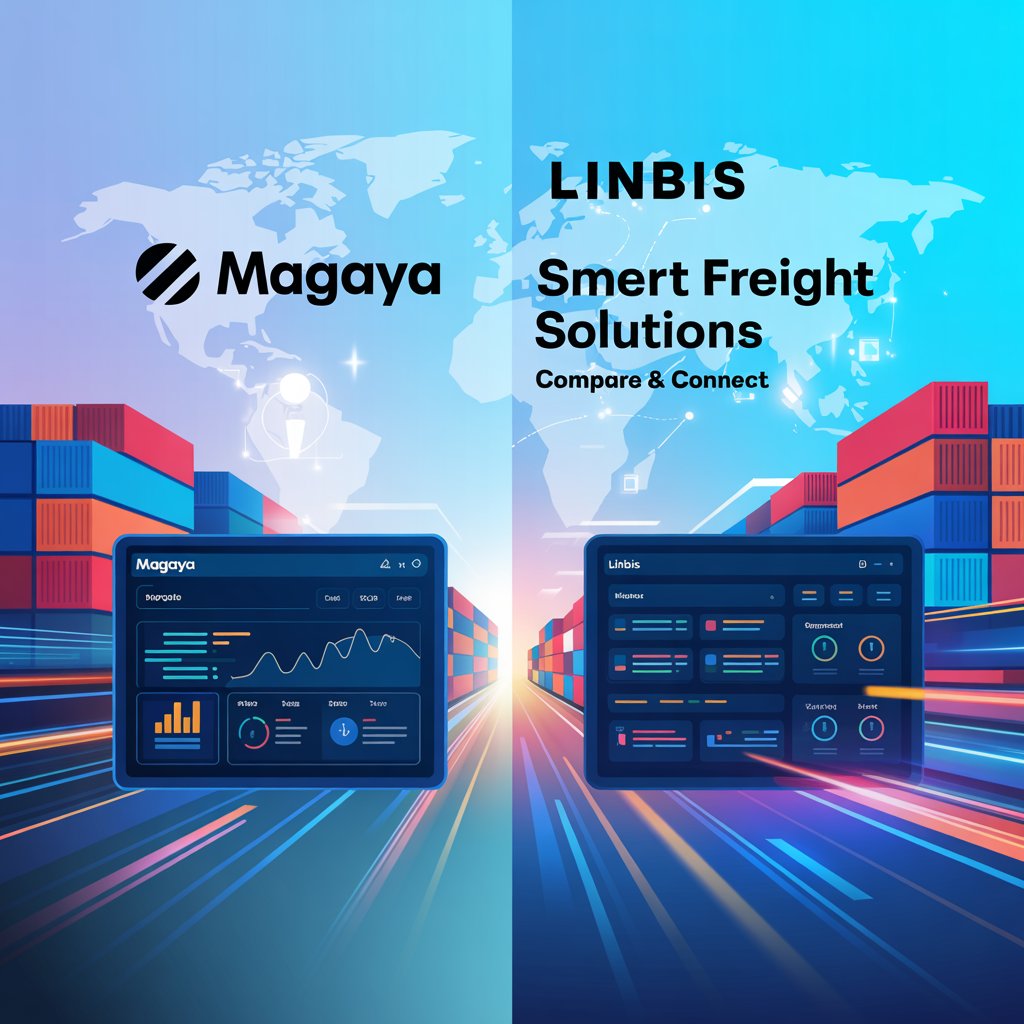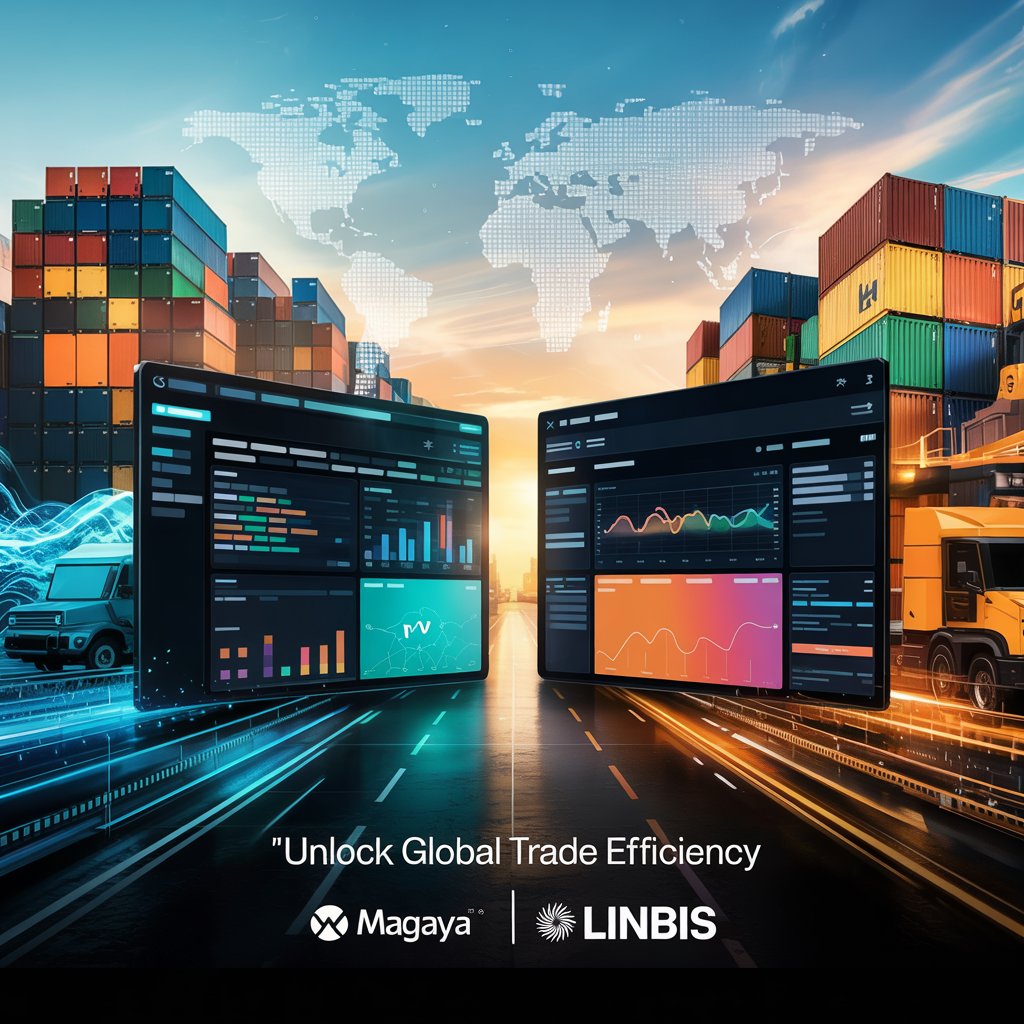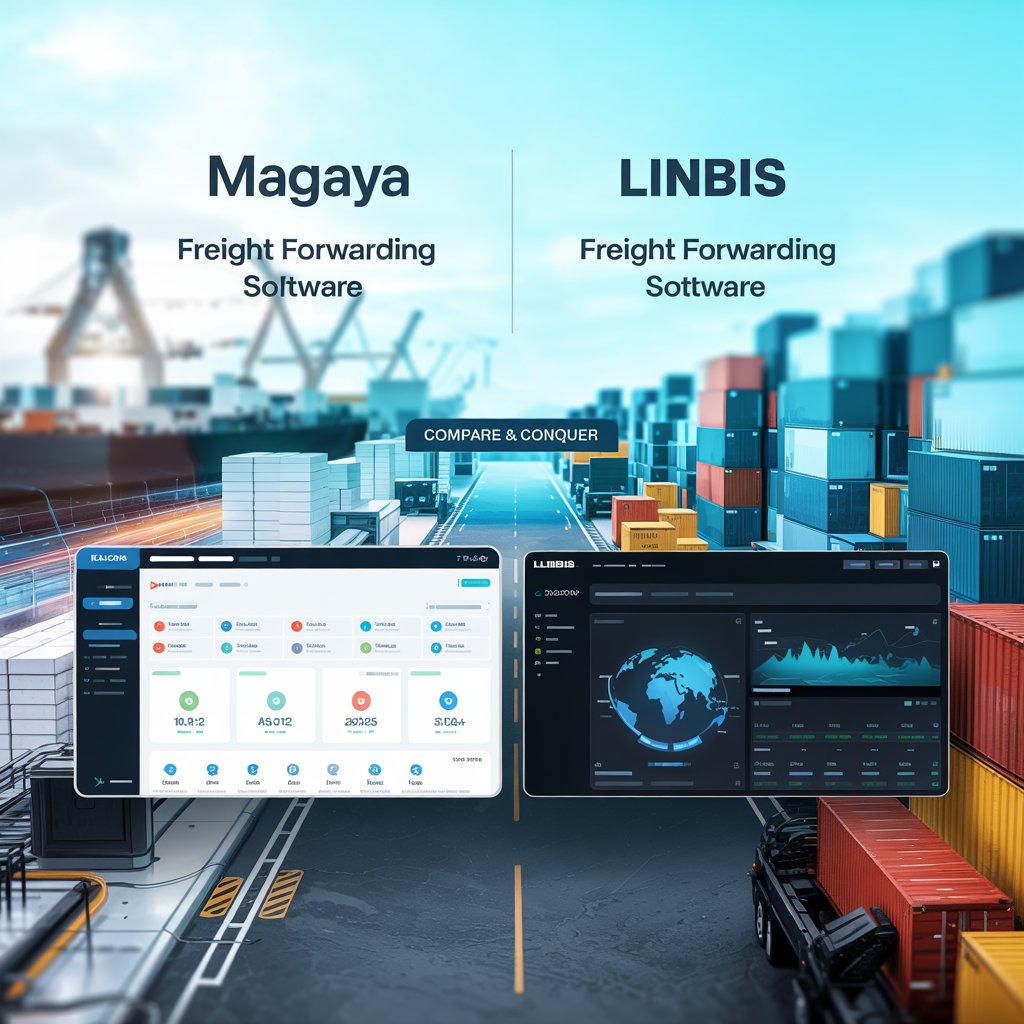Magaya vs. Linbis: Which Freight Software Fits Your Business?

🚀 Quick Comparison Overview
Feature Category | Magaya | Linbis |
Deployment | On-premise + Cloud | Cloud-based only |
UI/UX | Traditional, more complex | Clean, intuitive interface |
Target Users | Mid-sized to large forwarders + WMS | SMBs, startups, independent forwarders |
Freight Operations | Advanced with WMS and customs support | Streamlined with automation features |
Integrations | ERP, eCommerce, Customs APIs | CRM, Accounting, Tracking, eDocs |
Pricing | Mid-range, modular pricing | Affordable, transparent pricing |

🧰 Core Features
🔷 Magaya
Magaya is known for combining freight forwarding, warehouse management (WMS), and customs compliance into one ecosystem. It shines in environments that need both TMS + WMS capabilities under one roof.
Standout Features:
- Import/Export process automation
- Warehouse & inventory management
- US customs connectivity (AMS, ISF, etc.)
- Integration with accounting tools
- Mobile applications
🔷 Linbis
Linbis focuses on making freight forwarding software accessible, simple, and cloud-native—without sacrificing depth. It’s built to serve logistics firms that need fast onboarding, automation, and strong collaboration features.
Standout Features:
- Shipment quoting & booking
- Customer & vendor CRM
- Document generation & tracking
- Invoicing + accounting
- Open API for seamless integrations

🧑💻 Ease of Use & Onboarding
- Magaya: More feature-rich, but that comes with a steep learning curve. Best for teams with dedicated IT or operations specialists.
- Linbis: Built for immediate usability. Freight forwarders can go live quickly, with minimal training required.
🔌 Integration Capabilities
- Magaya: Offers strong integrations with warehouse systems, marketplaces, and customs portals, especially suited for US-based firms.
- Linbis: Provides modern REST APIs and built-in support for CRMs, accounting platforms, and logistics tools—ideal for those building a connected tech stack.
💵 Pricing
- Magaya: Pricing depends on modules selected. Costs increase as features are added (e.g., WMS, automation tools, integrations).
Linbis: Transparent pricing structure with affordable monthly plans. Ideal for businesses scaling their freight ops without enterprise-level budgets.

🎯 Who Should Choose What?
✅ Choose Magaya if you:
- Manage both freight forwarding and warehousing
- Operate in highly regulated markets with strict customs integration needs
- Have a mid to large team and in-house IT resources
- Prefer hybrid deployment (on-premise + cloud)
✅ Choose Linbis if you:
- Are a small to mid-sized freight forwarder or logistics startup
- Want simple onboarding, fast deployment, and ease of use
- Need to automate quoting, documentation, and invoicing workflows
- Prefer modern cloud-only tools with great value
🔍 Final Verdict: Magaya or Linbis?
Both Magaya and Linbis are strong players in the freight software arena—but they’re built for different business profiles.
- Magaya is great if you’re managing complex, large-scale operations with warehouse needs.
- Linbis is the go-to for SMBs looking to digitize and scale efficiently without enterprise-level costs or complexity.
Need something lightweight yet powerful?
👉 Linbis is your best bet.
Running complex trade operations with warehousing?
👉 Magaya may be the better fit.
